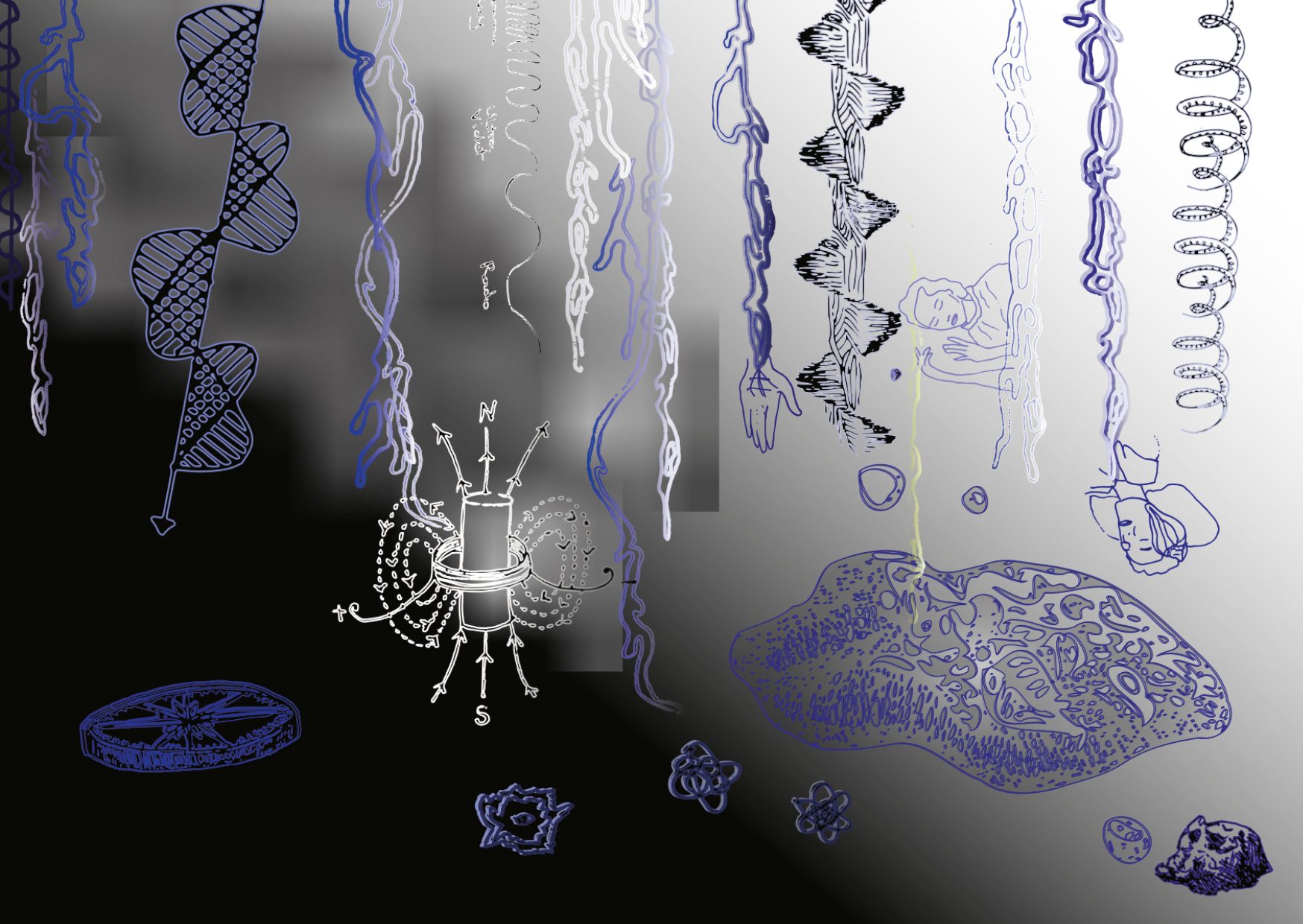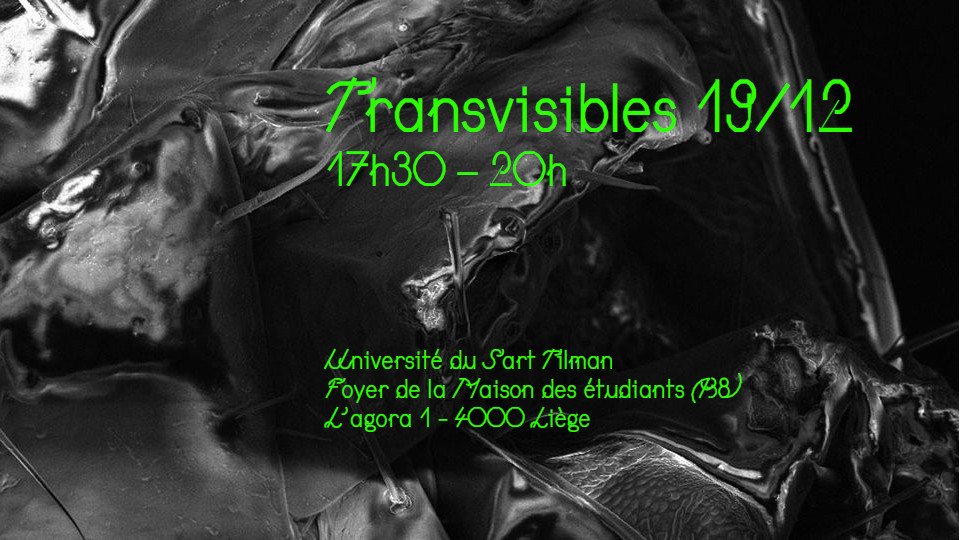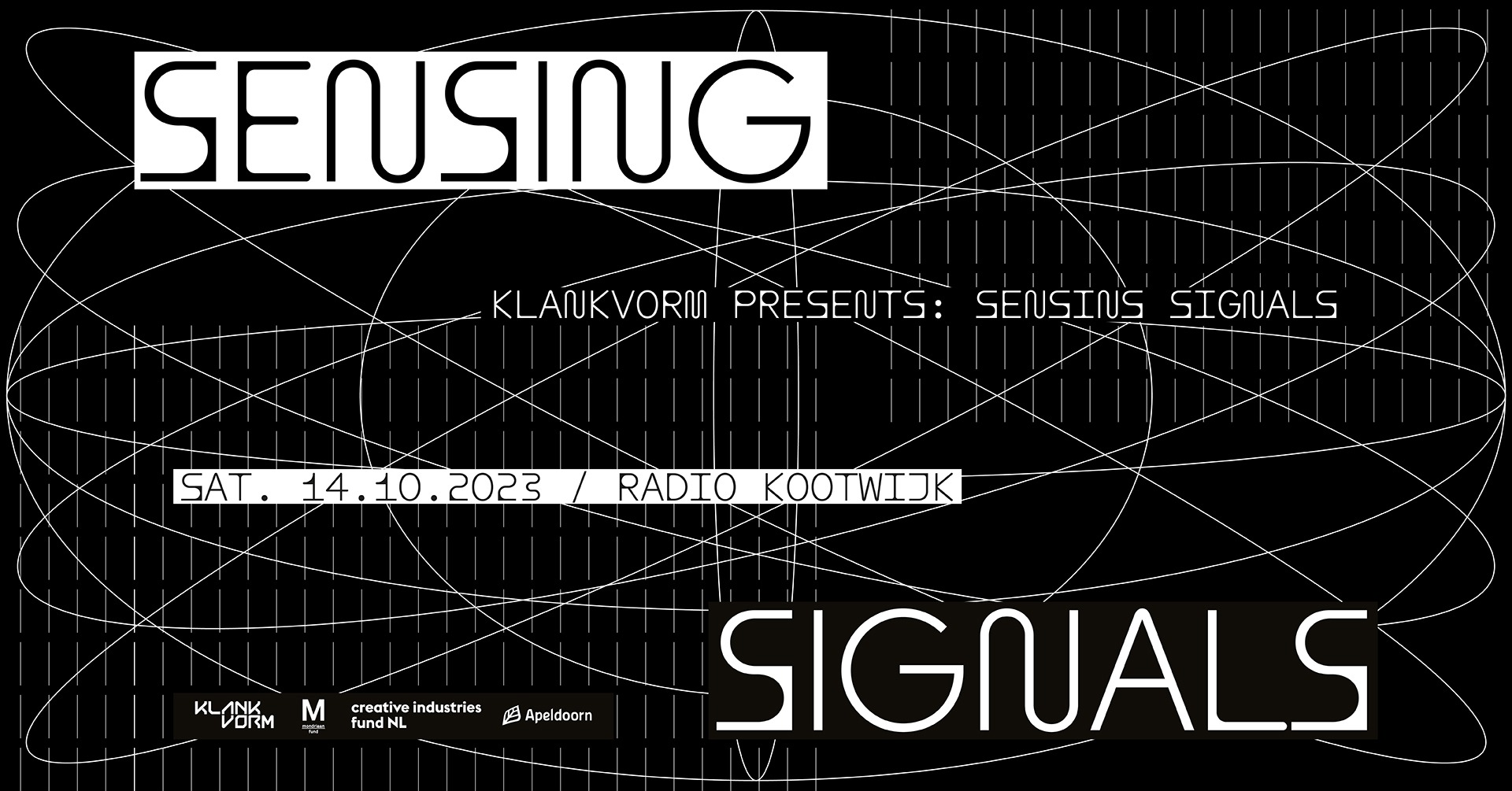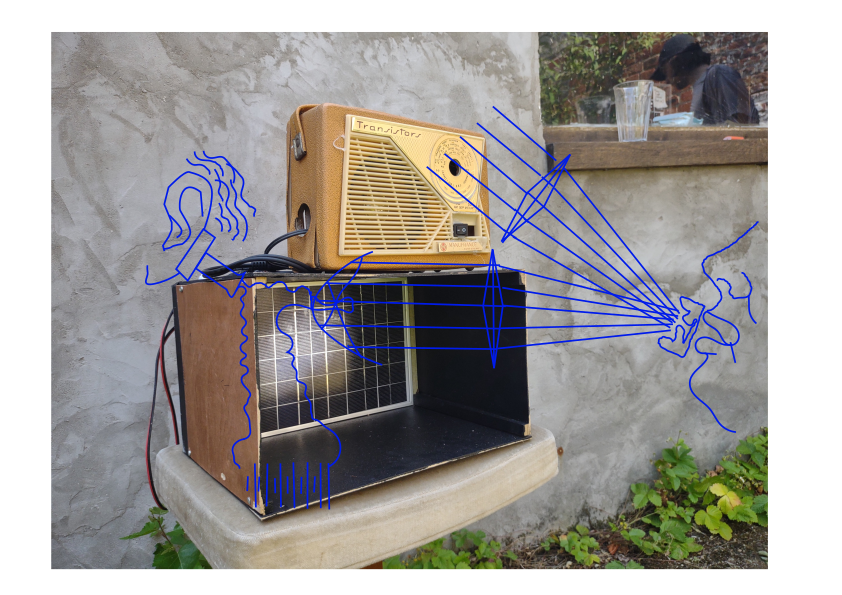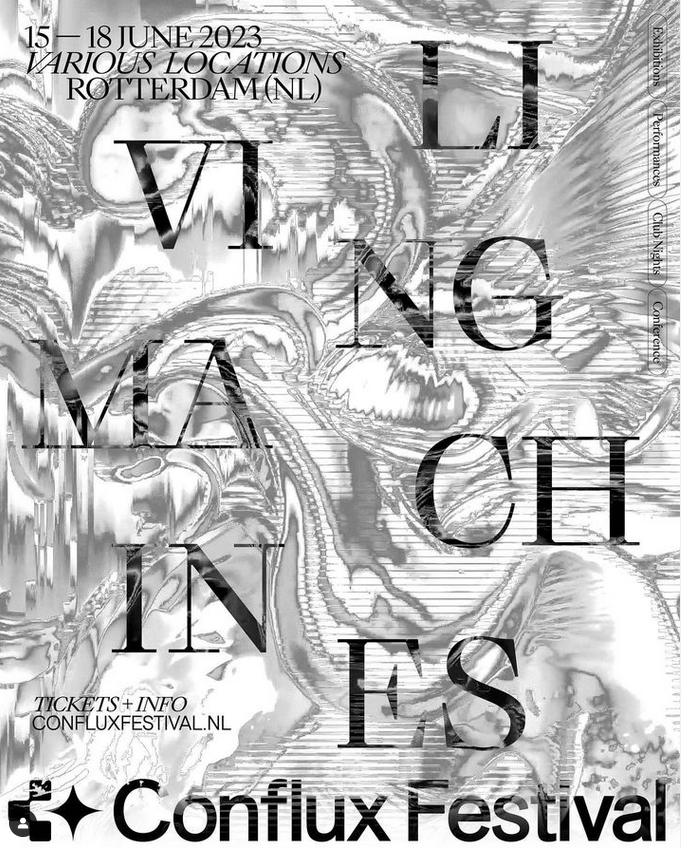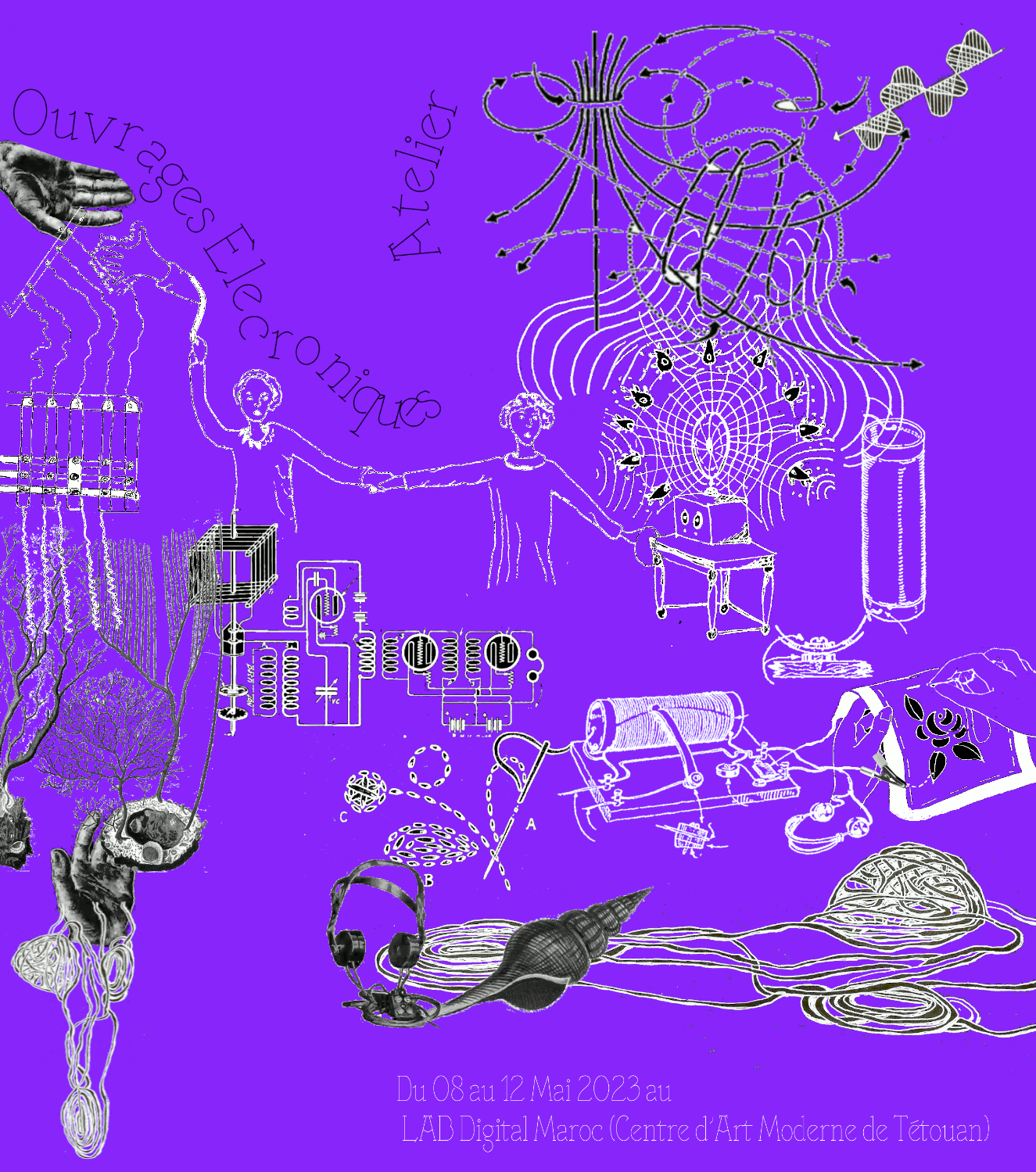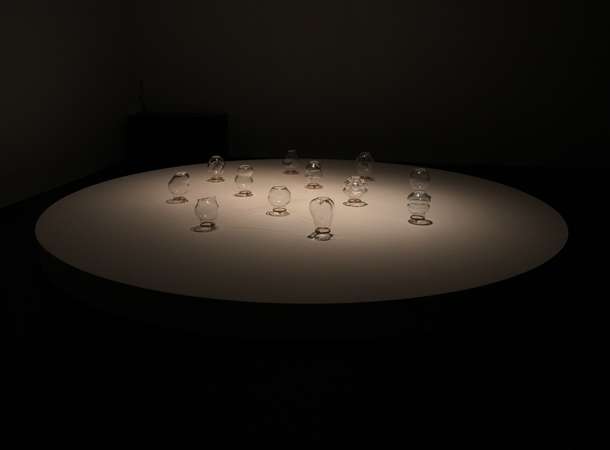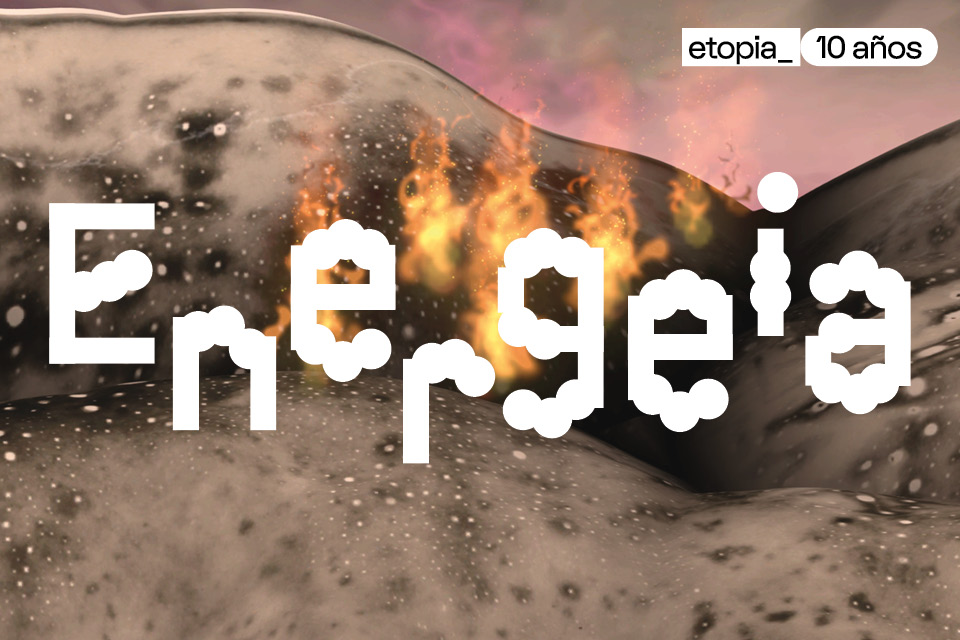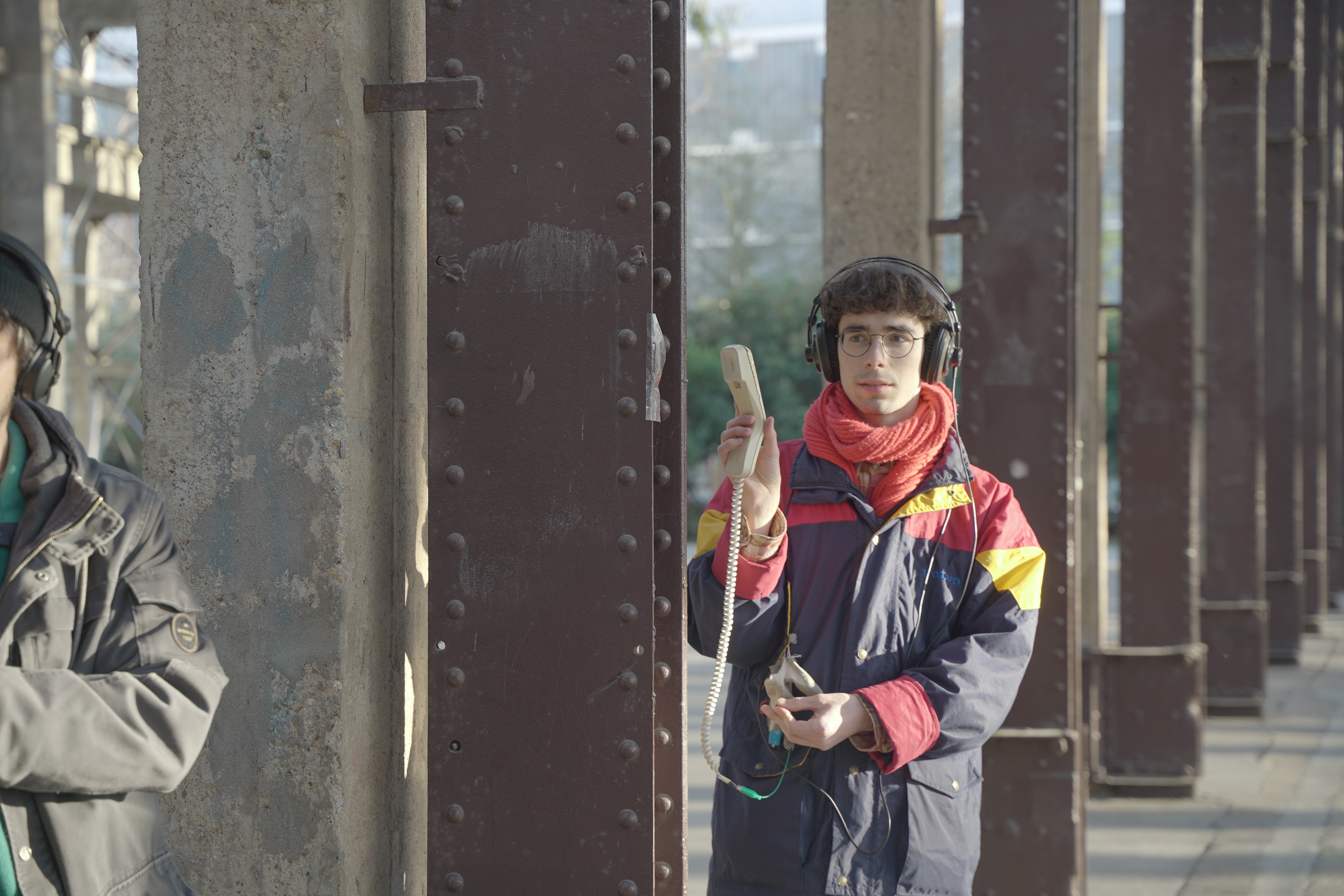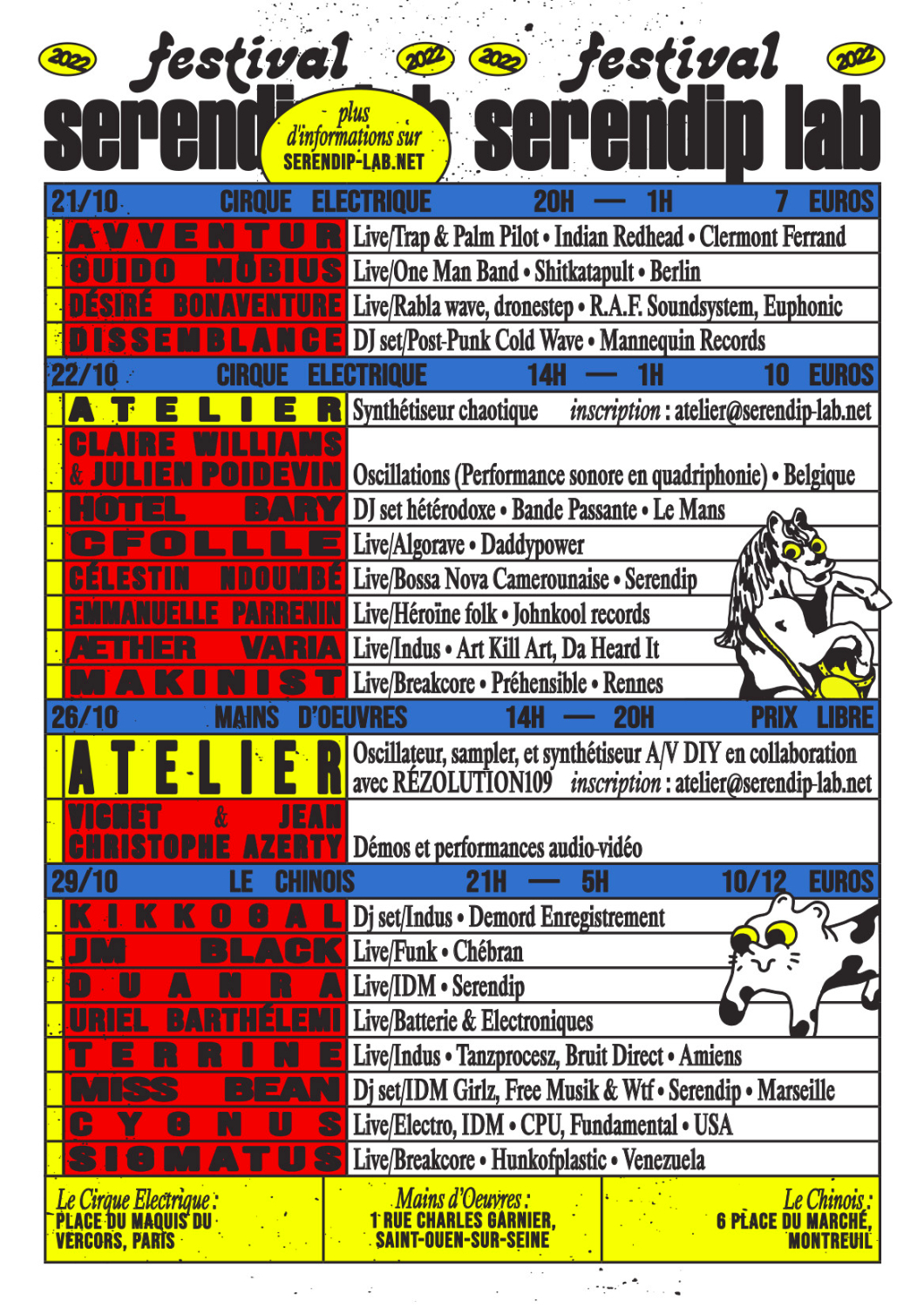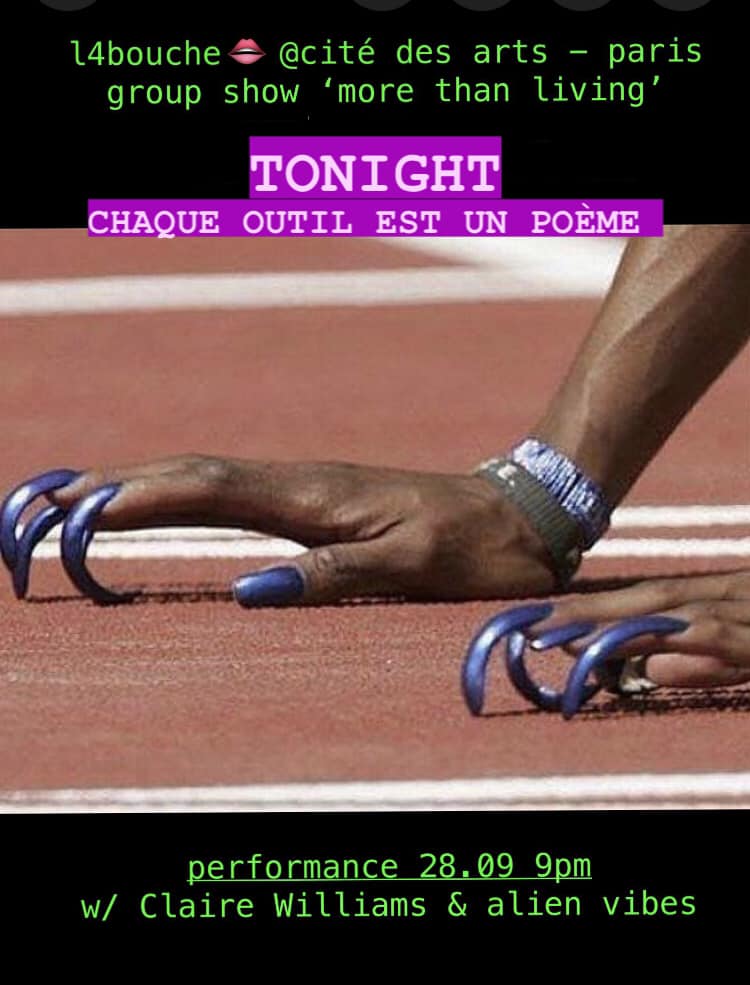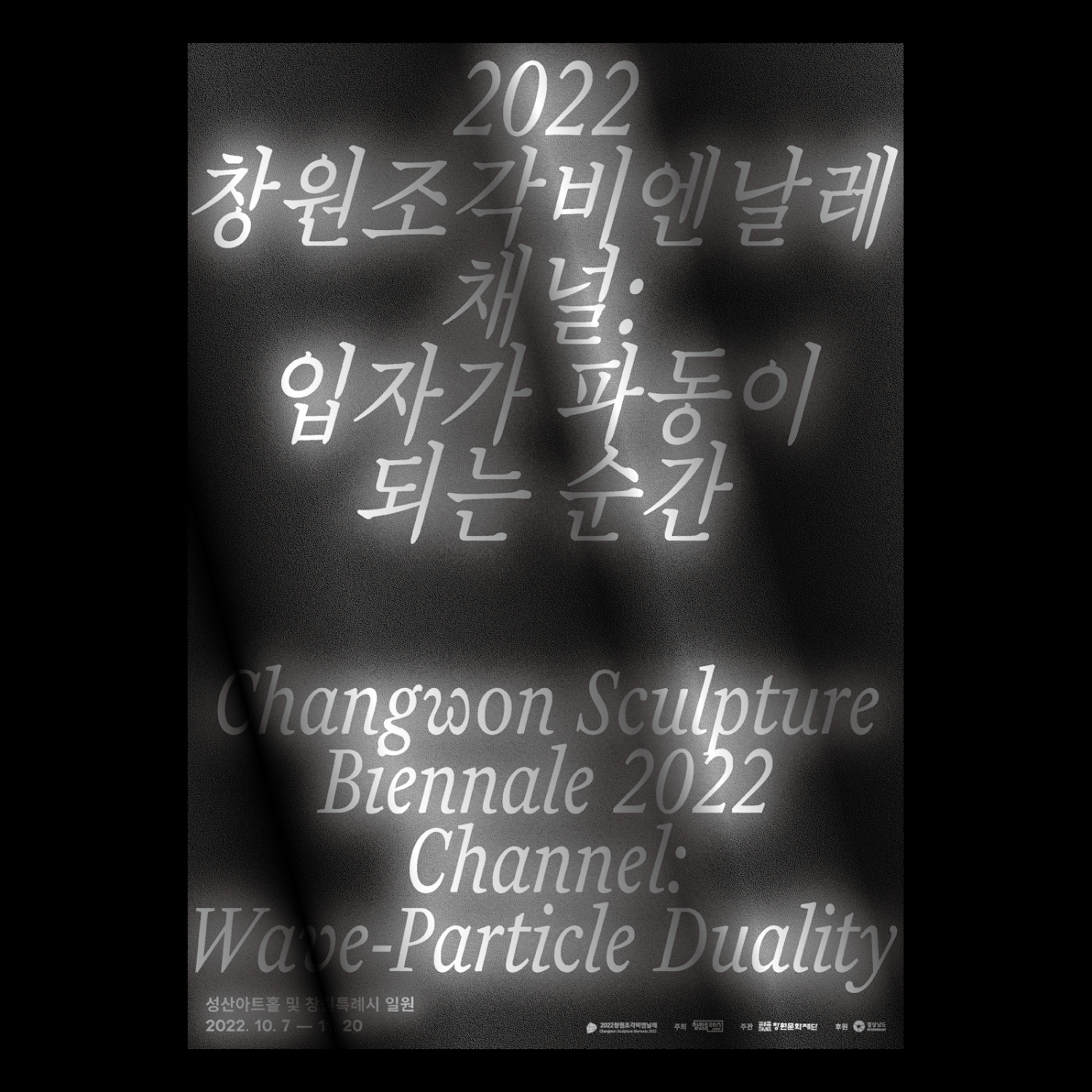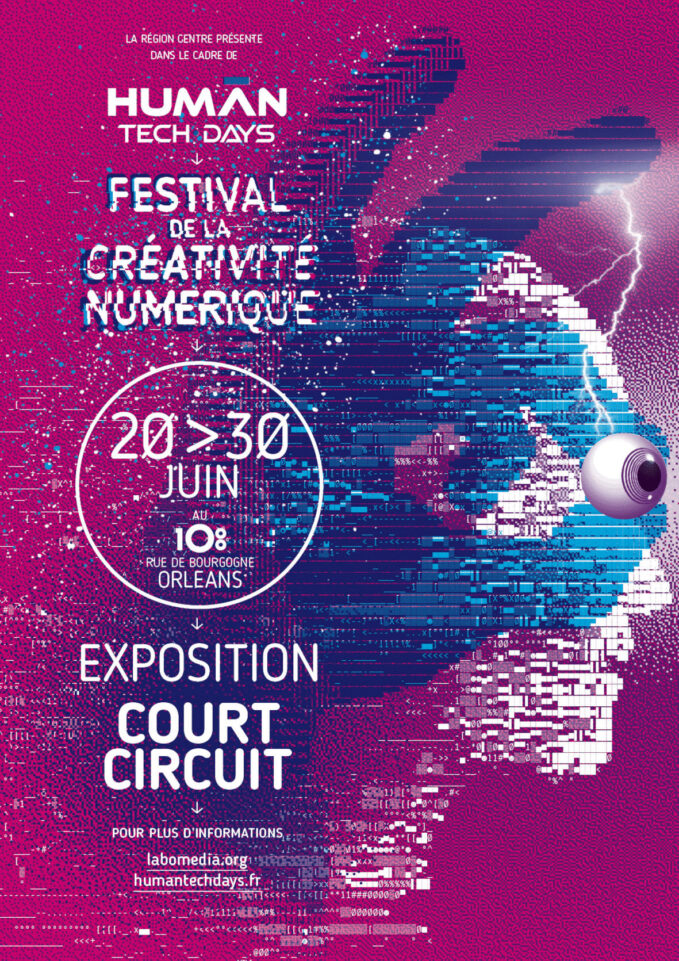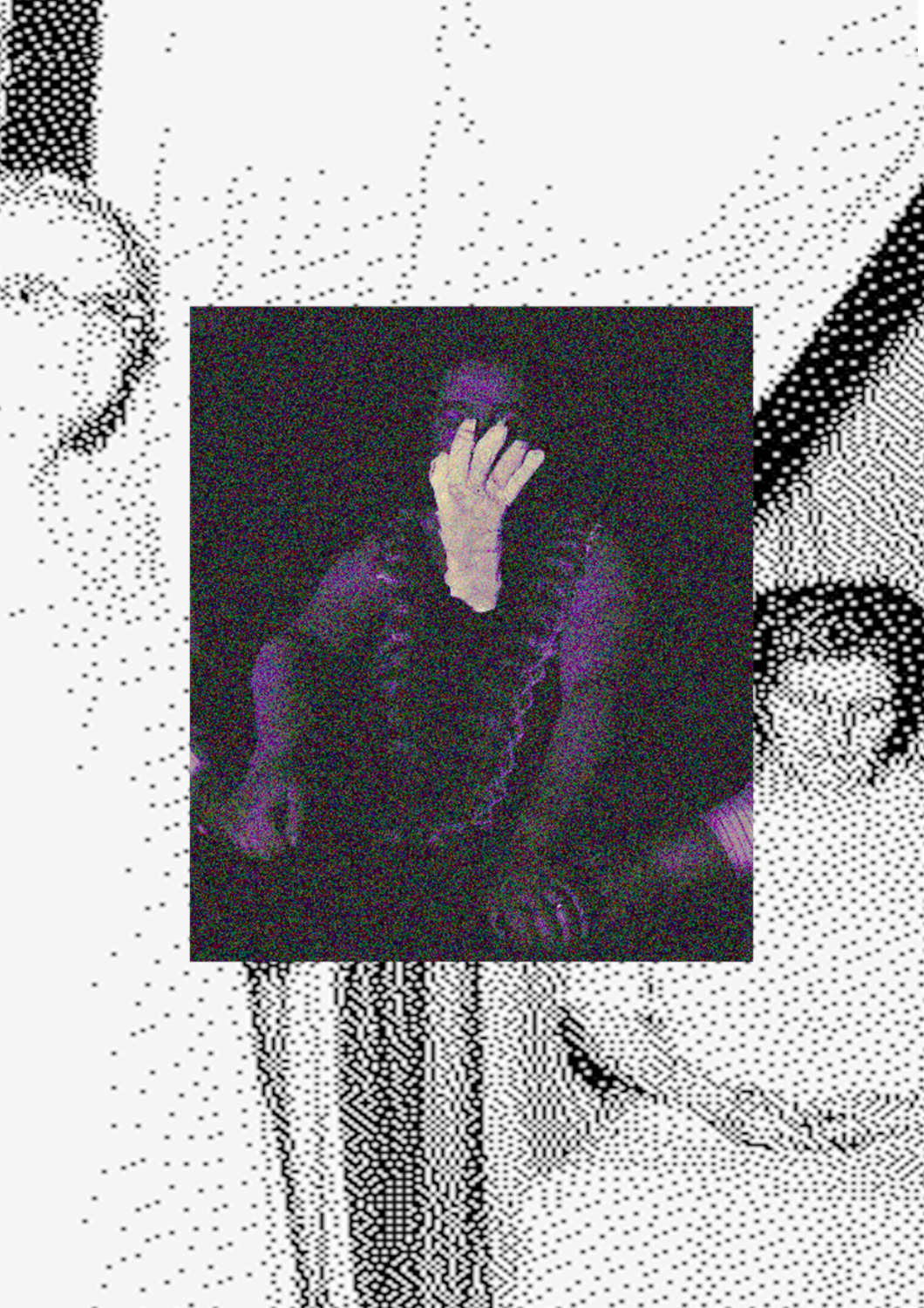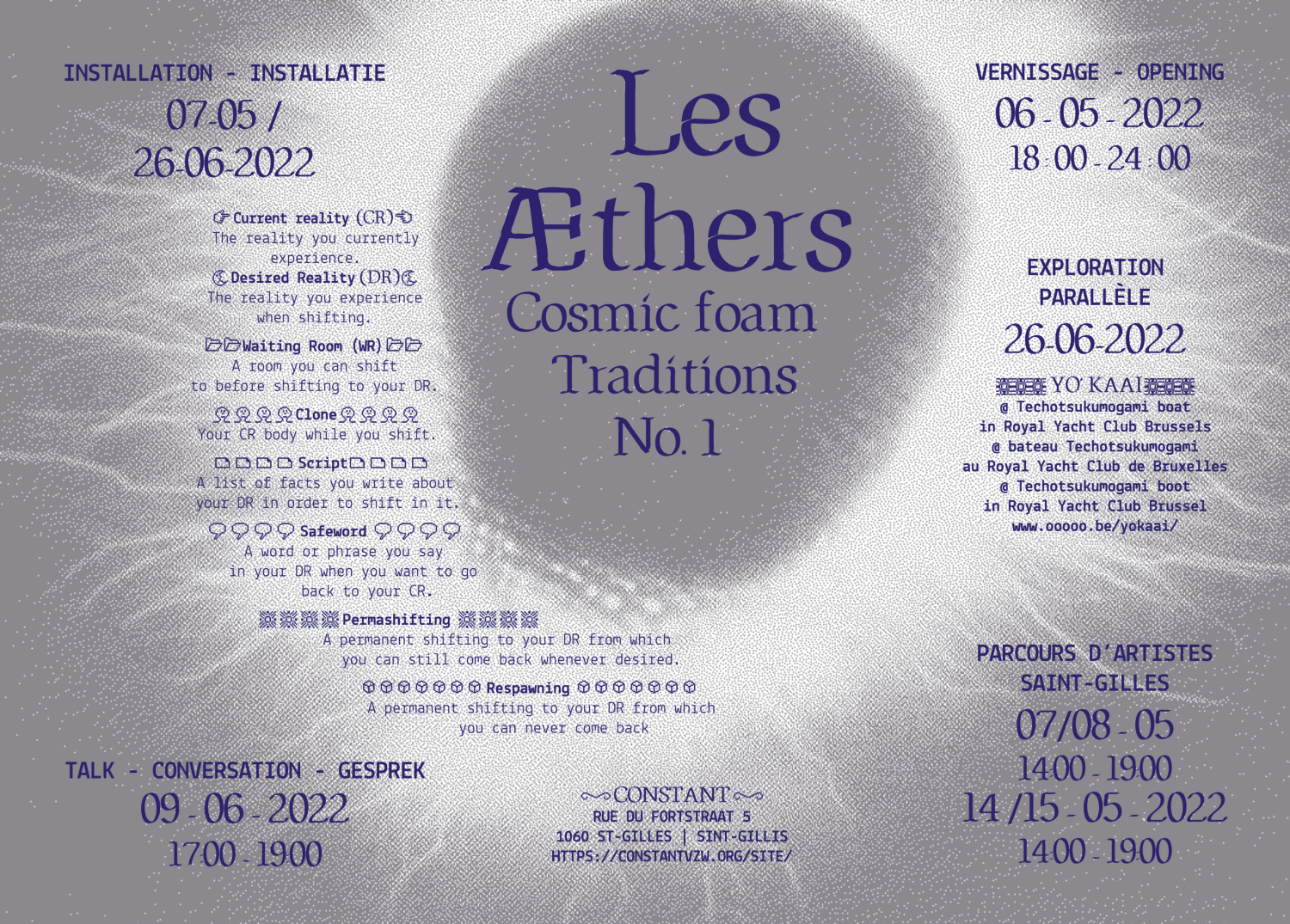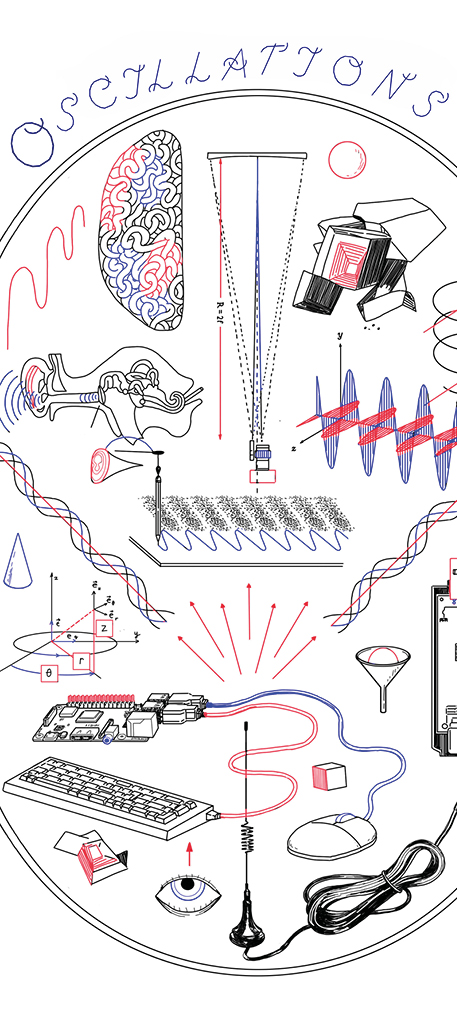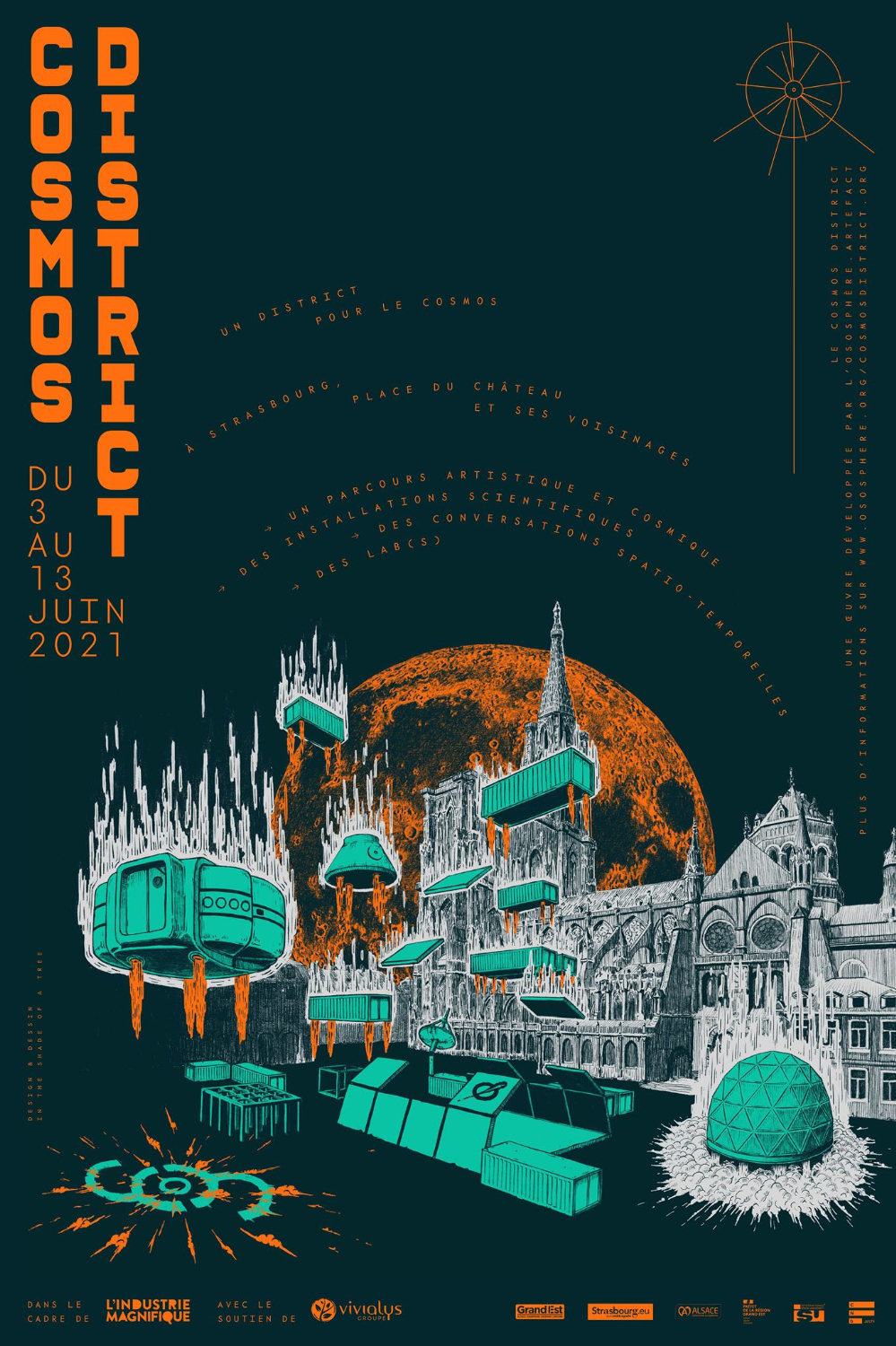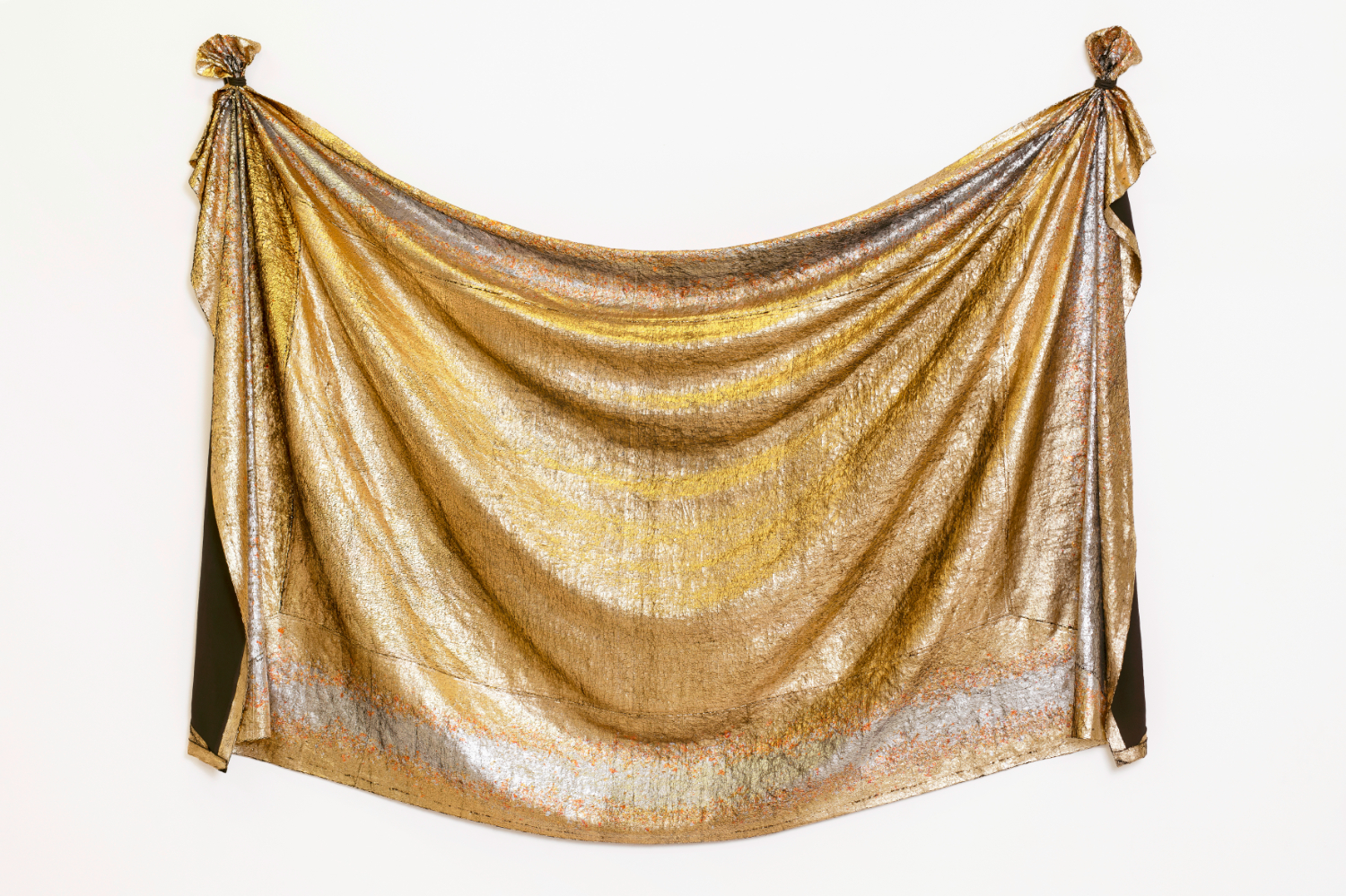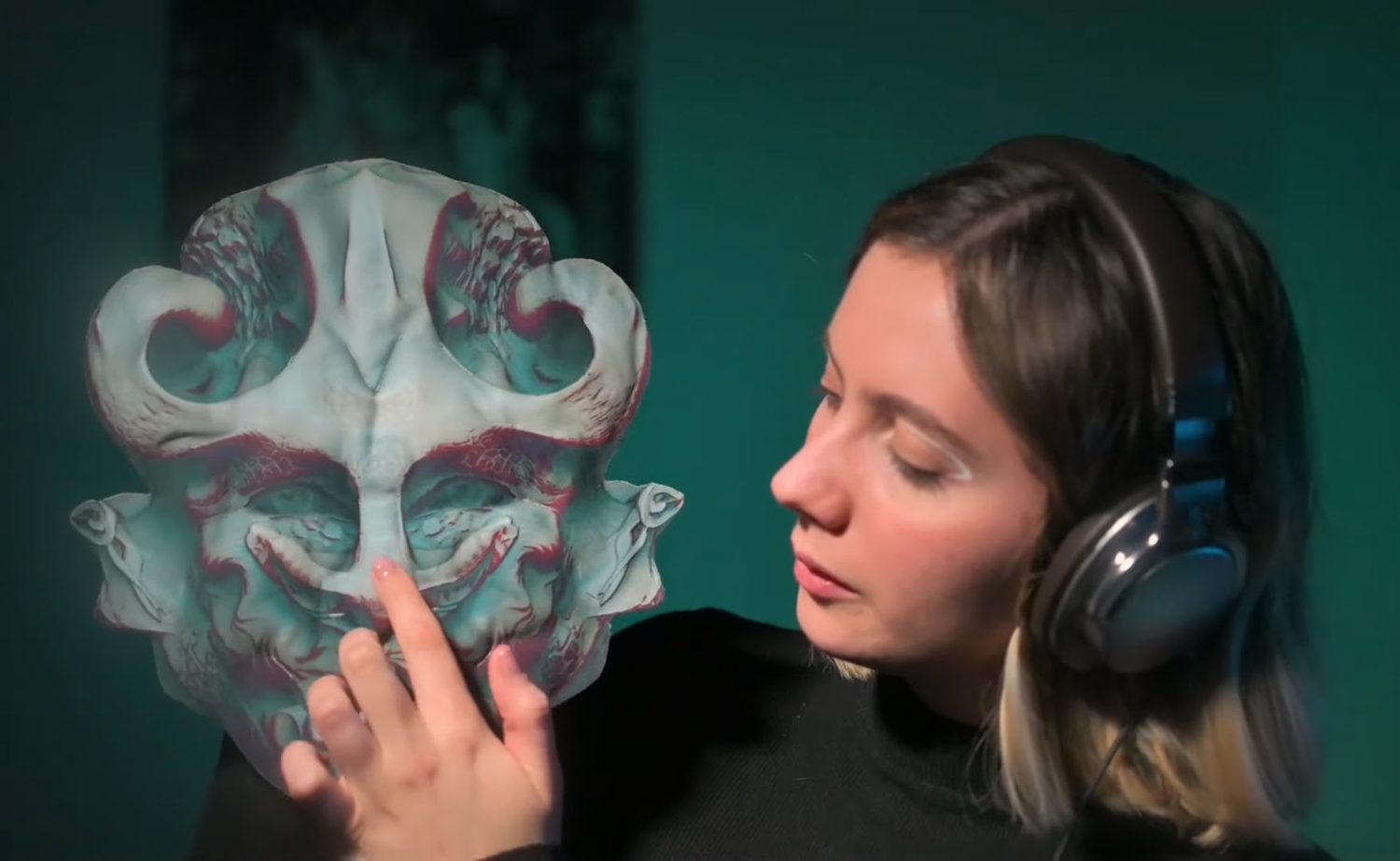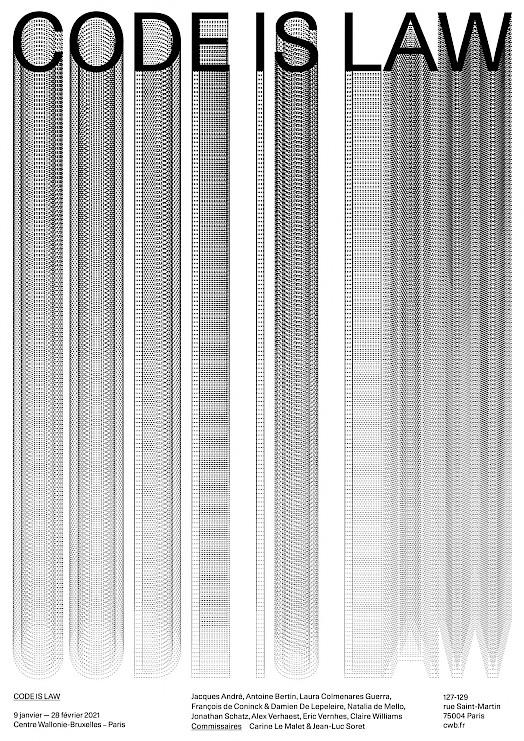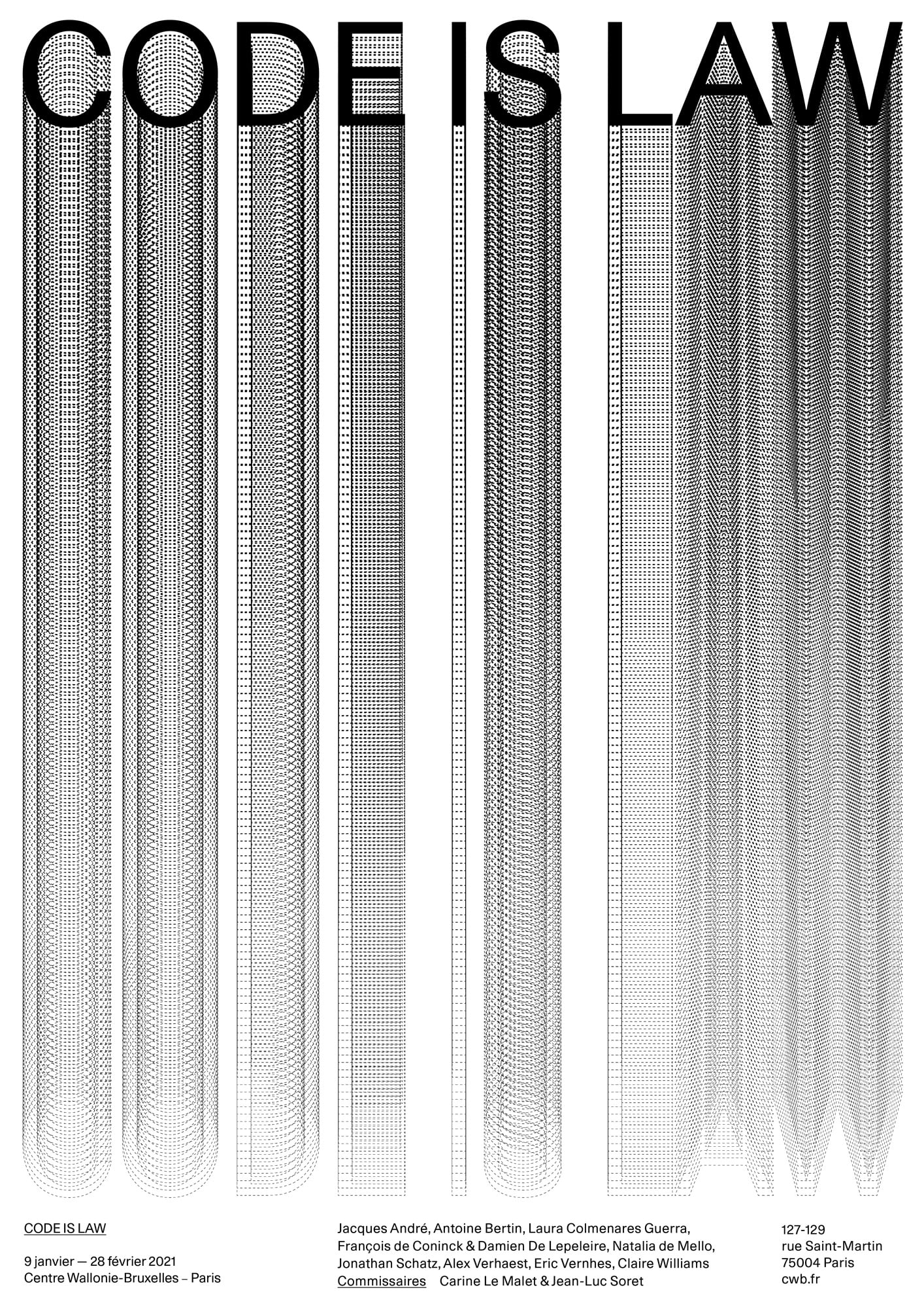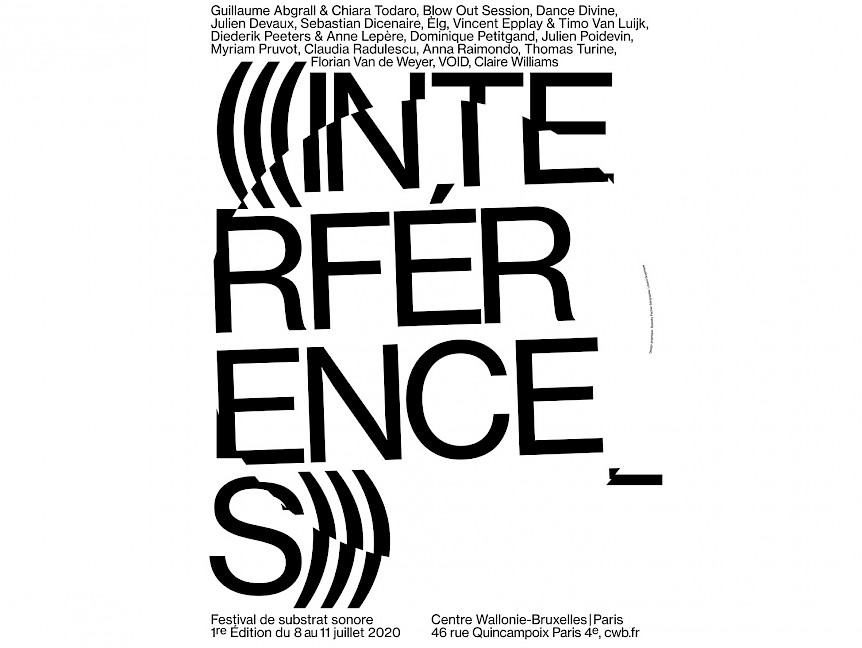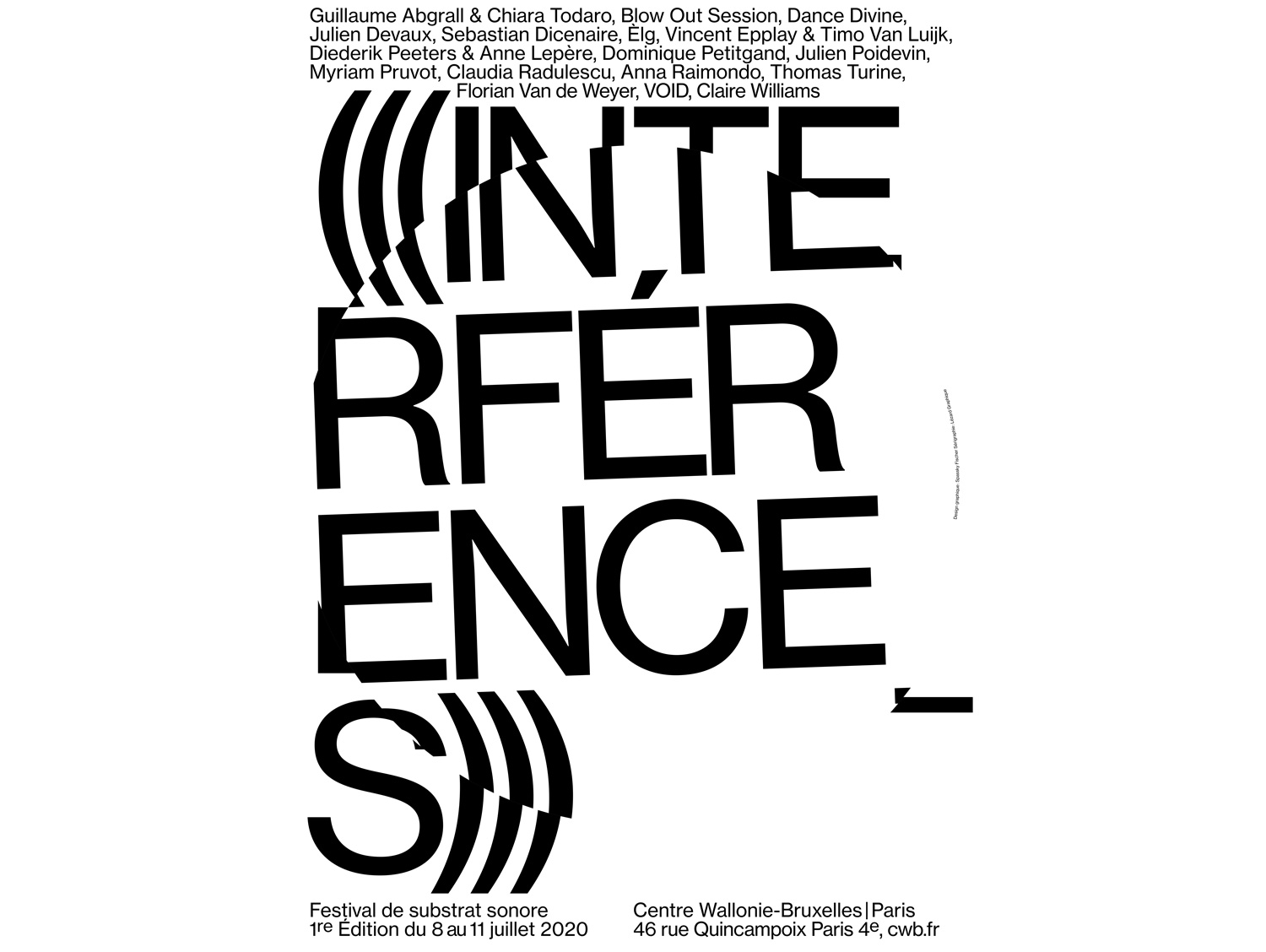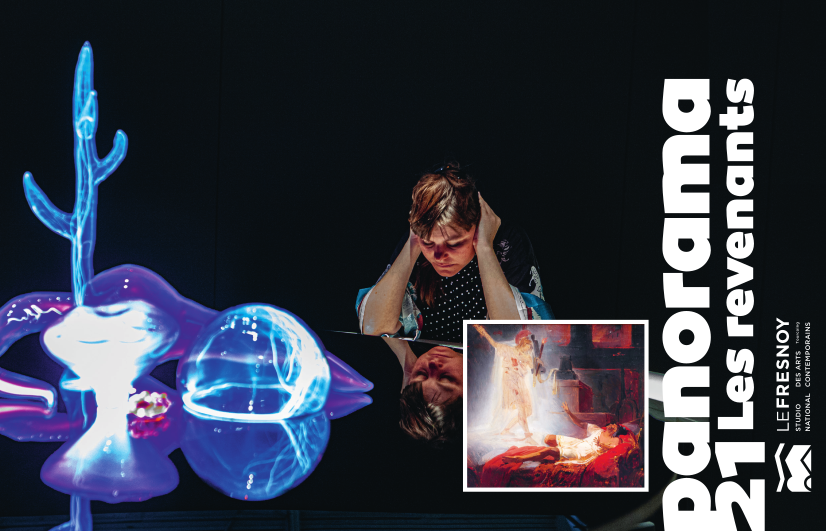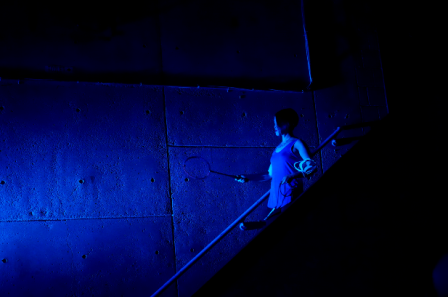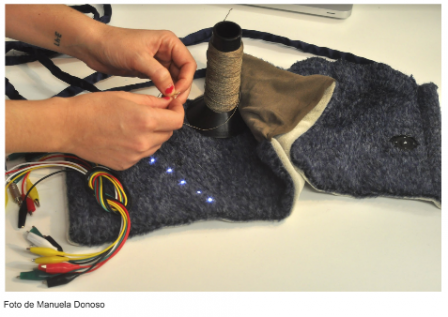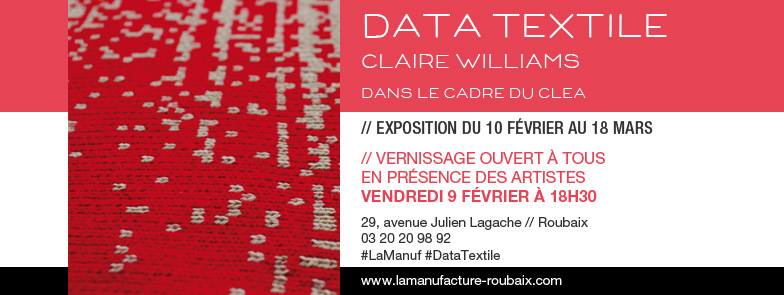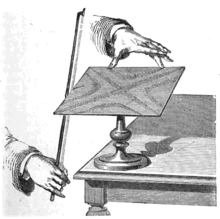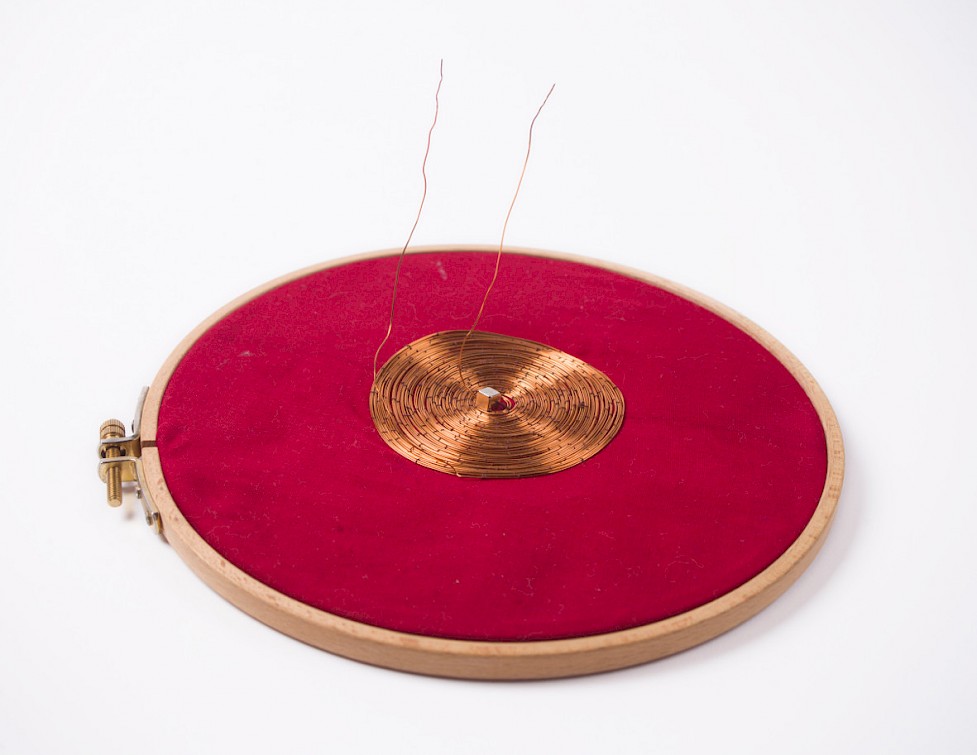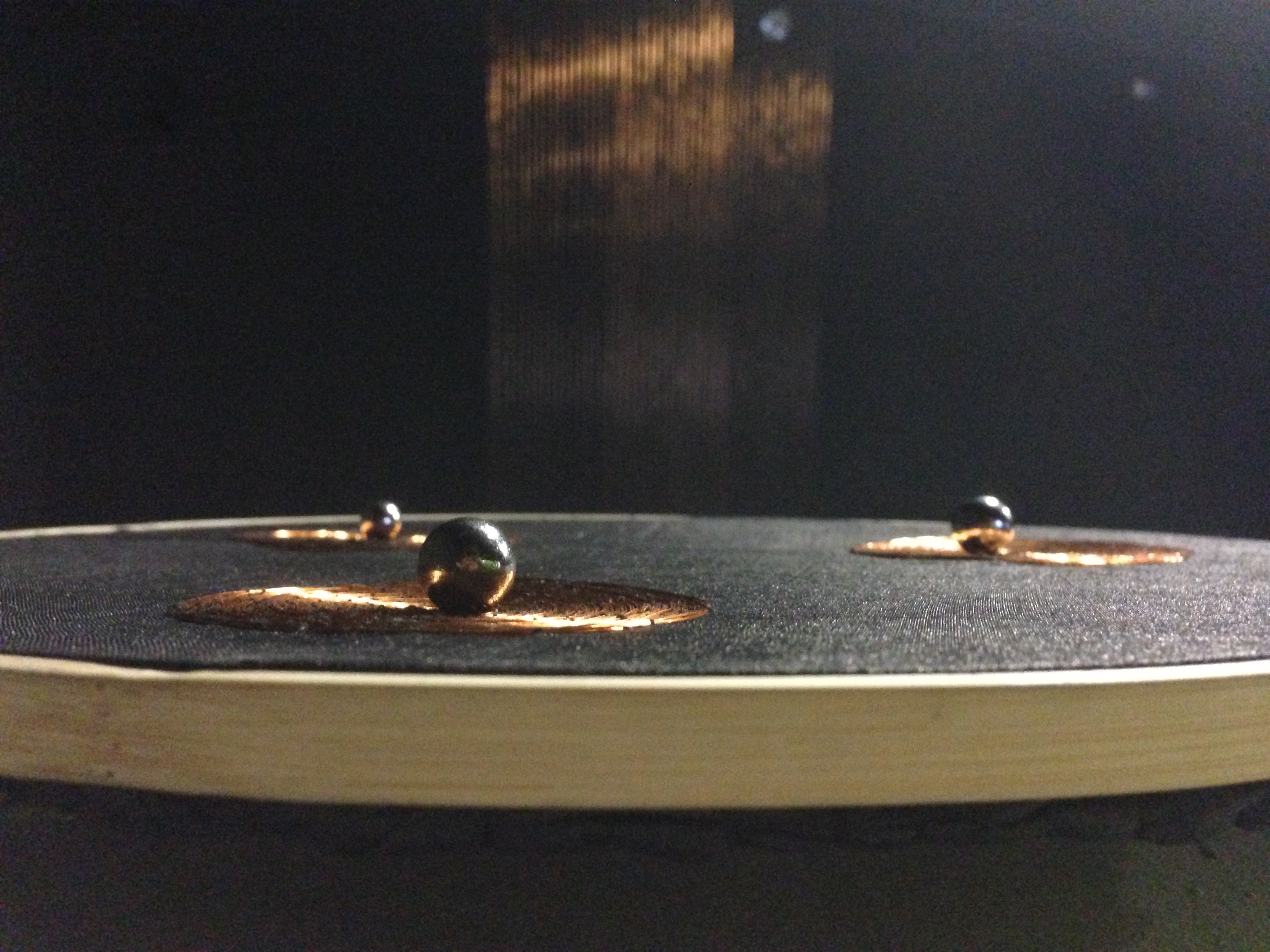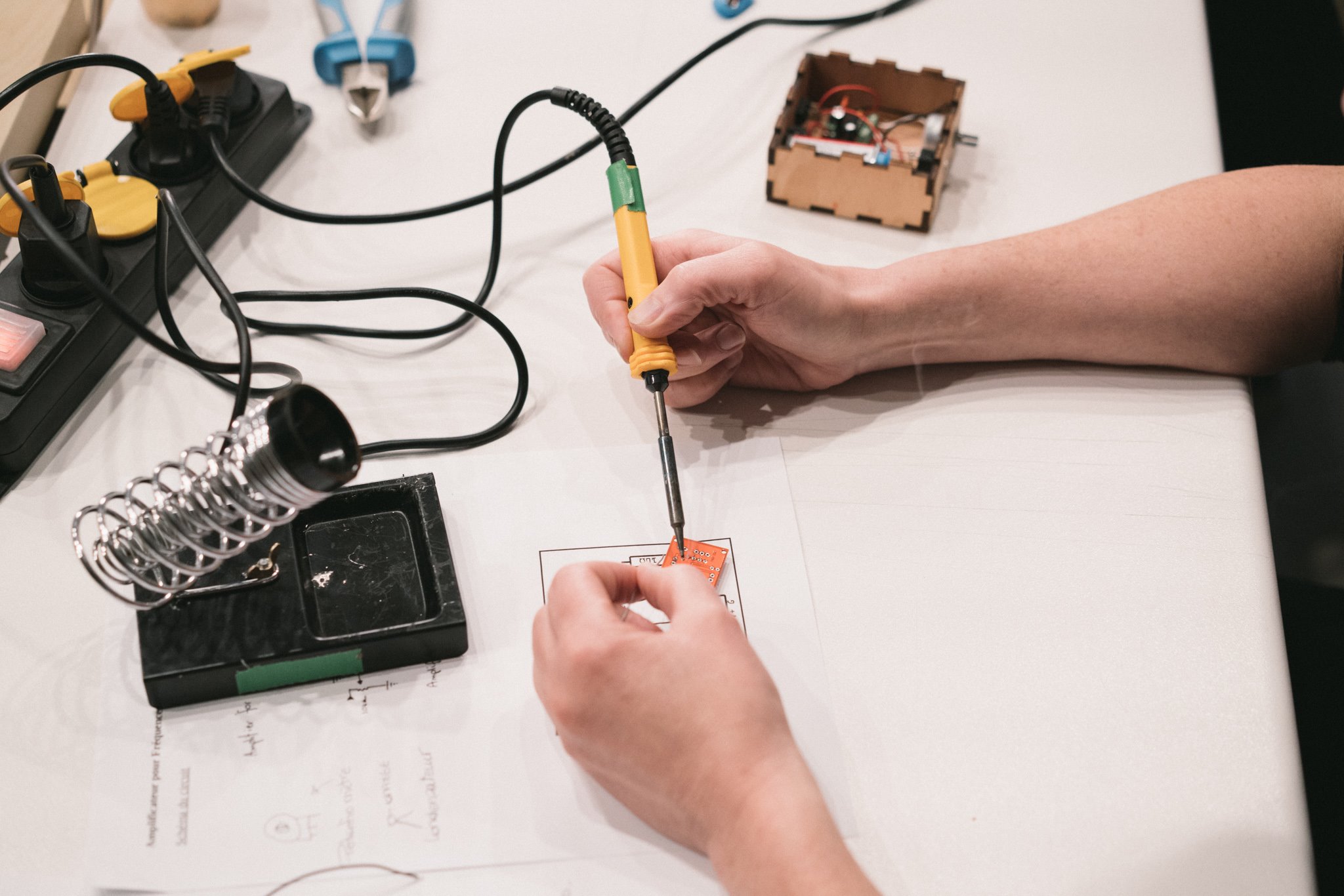Textile Speakers
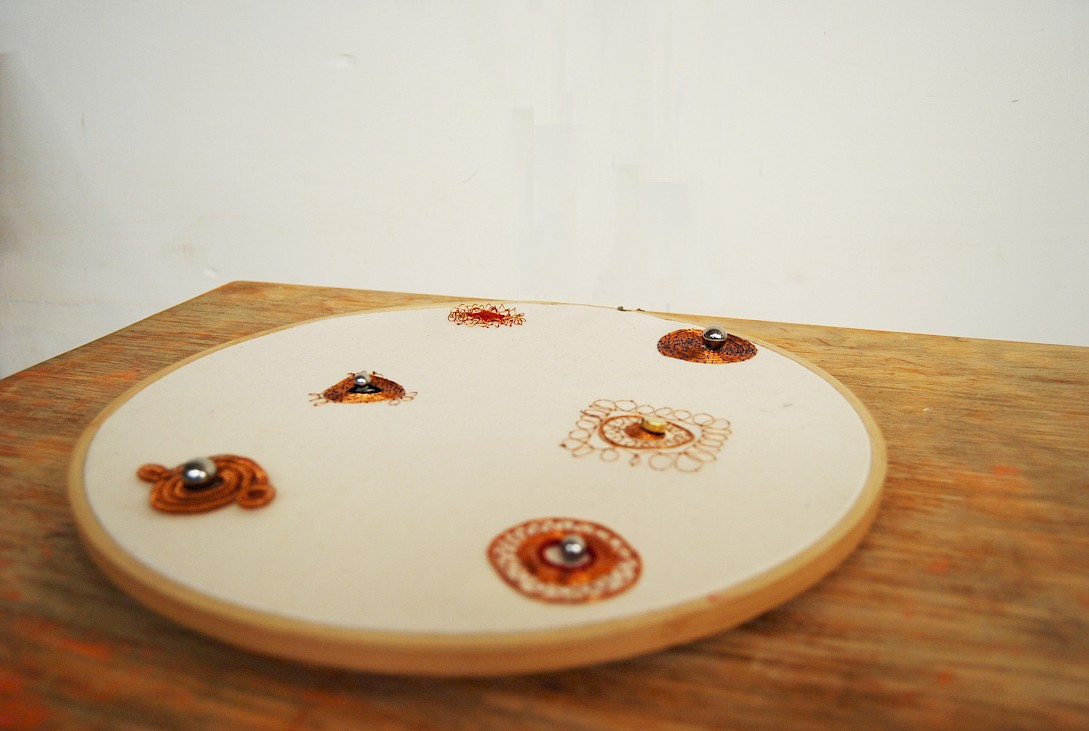
Research on different techniques to create speakers using textile techniques. The idea is to create a coil with fabric, cotton thread, enamelled copper wire, a magnet, an amplifier and external sound input (phone, mp3..)This research was inspired by Hannah Perner Wilson experiments with fabric speakers http://www.kobakant.at/DIY/?p=2936
Recherches sur différentes techniques pour créer des hauts parleurs en puisant dans un répertoire de techniques textiles. Comment fabriquer un bobinage électromagéntique avec du fil, tissus, cuivre émaillé, aimants et un ampli connecté à une entrée son (mp3, téléphone).Cette recherche est inspirée des experimentations de Hannah Perner Wilson qui experimente avec des hauts parleurs textiles http://www.kobakant.at/DIY/?p=2936.
Different experiments to create coils:
Experimentations pour créer des bobines:
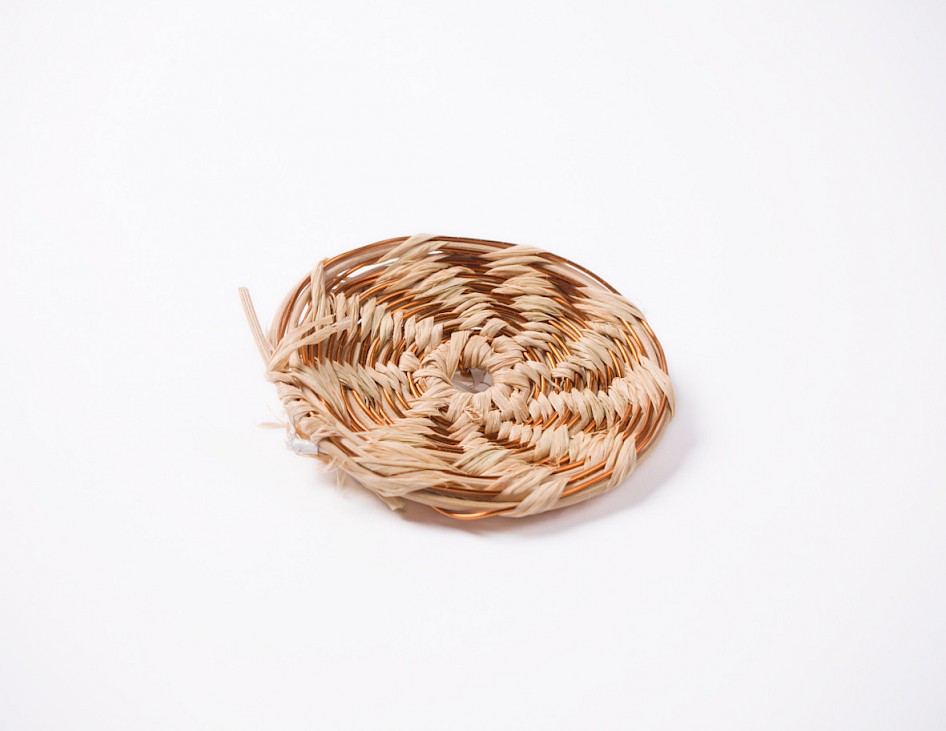
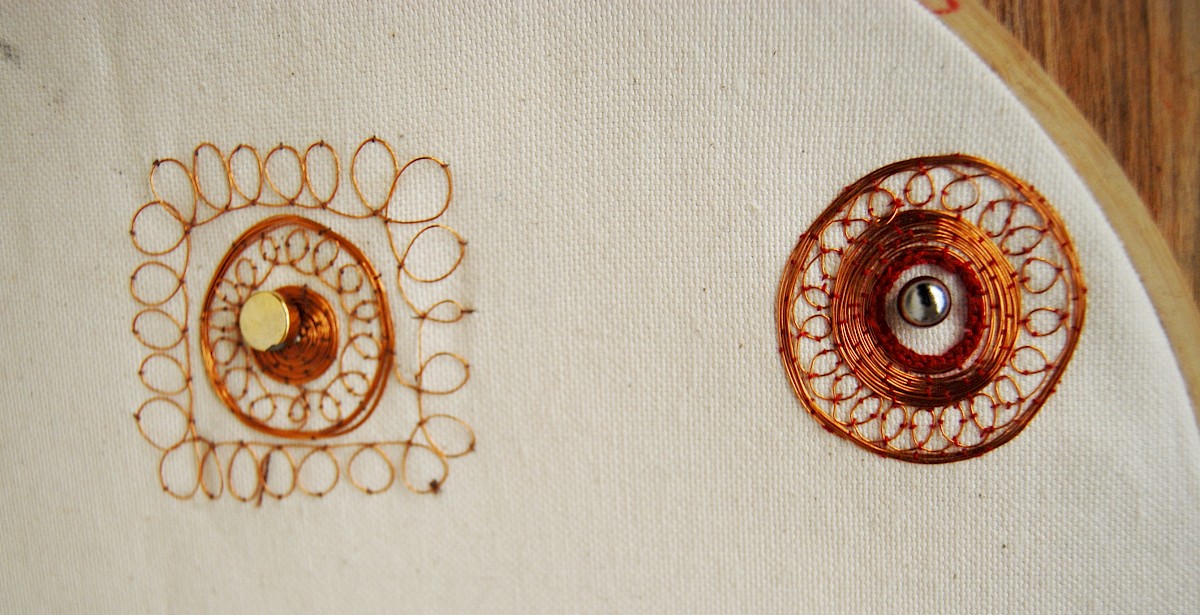
Some experiments were made with the couching embroidery technique, inspired by the embroidery patterns of the Barmer tribe (Rajastan – India) who use gold threads embroidery techniques.
Certaines experimentations sont inspirées des techniques de broderies d'or qui utilise la technique du fil "couché" ou "couchure" dans les motifs de la tribu de Barmer (Rajastan, Inde) qui mobilisent des techniques liées à celle de la broderie d'or.
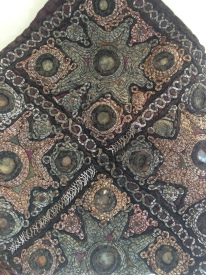
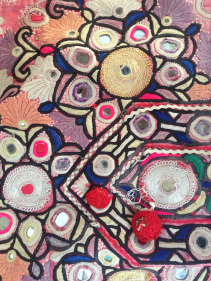
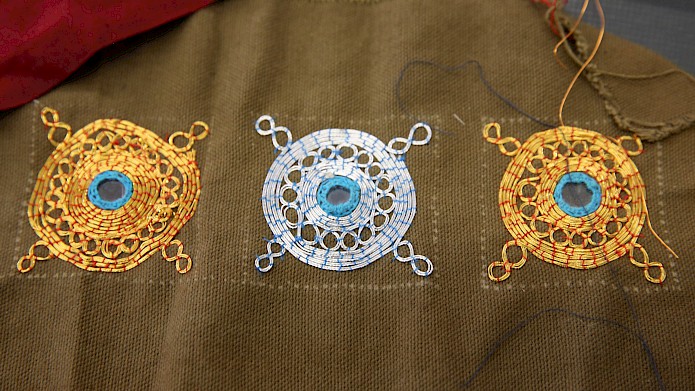
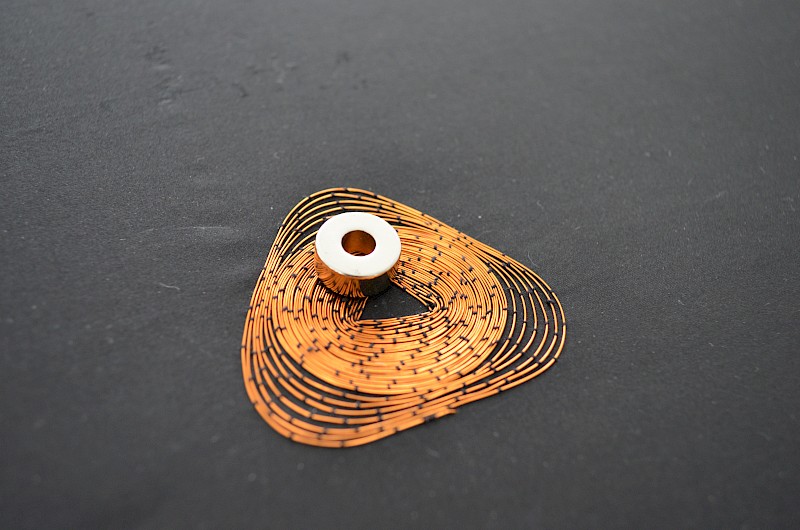
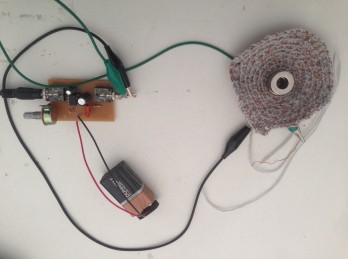
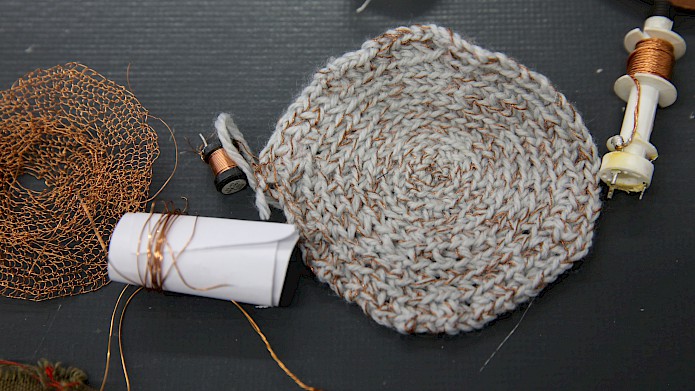
Experiments with a coil crochet technique blending wool and cooper thread.
Expérimentations avec des techniques de crochet en spirale en intégrant du fil de cuivre dans le fil de laine.
Yarn: wool & soft copper wire from Karl Grimm (not Enamelled) ref: High Flex 3981 7×1
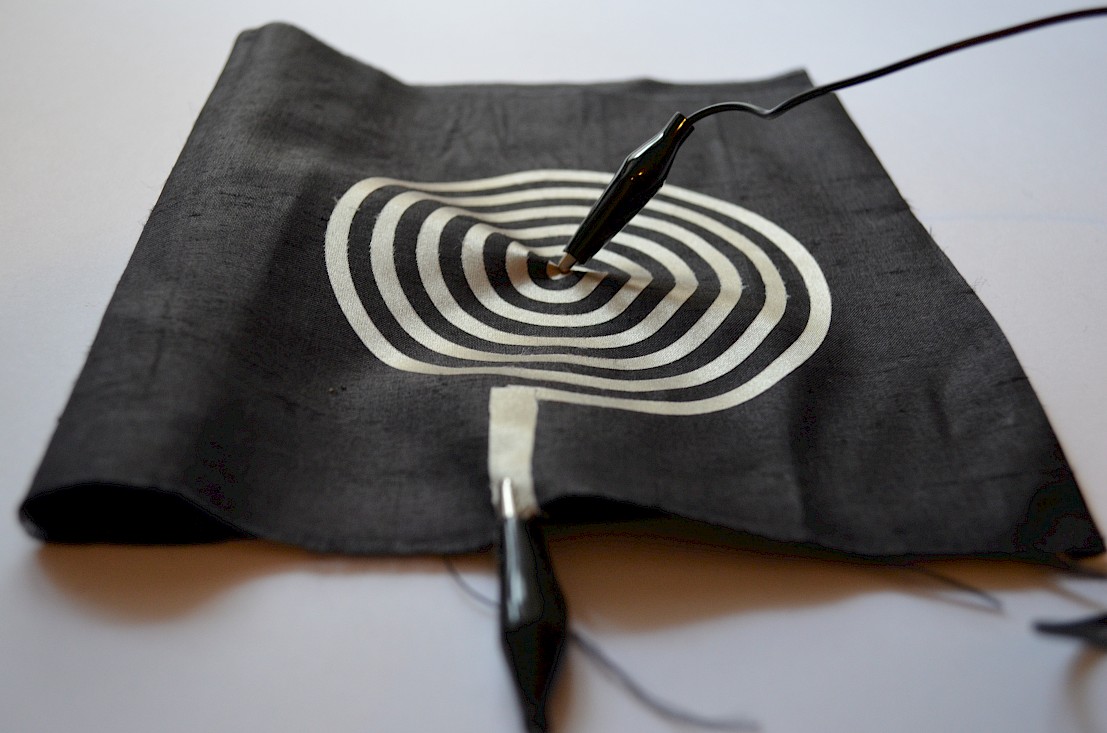
Découper un matériau conducteur (cuivre + Ni) en spiral :
Utiliser un plotteur de découpe ou découp laser pour des formes plus complexes et collé sur des surfaces souples.
Autres expérimentations avec le même principe : Créer des surfaces vibrantes en utilisant les bobbines comme de moteurs via des sons de basses fréquences.++ http://www.xxx-clairewilliams-xxx.com/chants-magnetiques/
<iframe title="vimeo-player" src="https://player.vimeo.com/video/274839882?h=0afce11f58" width="640" height="360" frameborder="0" allowfullscreen></iframe>
<iframe src="https://player.vimeo.com/video/229681662?h=736ff56479" width="640" height="360" frameborder="0" allow="autoplay; fullscreen; picture-in-picture" allowfullscreen></iframe>
<p><a href="https://vimeo.com/229681662">Chants_Magnetiques</a> from <a href="https://vimeo.com/user40491861">claire wiliams</a> on <a href="https://vimeo.com">Vimeo</a>.</p>
Materials:
- Enameled Copper (diameter 0.3)
- Embroidery DMC coton thread
- Embroidery hoop
- Thin, dry or elasthane fabric
- Neodymium Magnet
- Class T amplifier
- Sound Input (phone, Mp3)
Matèriaux:
-
Fil de cuivre émaillé (magasin électronique) (diamètre 0.3)
-
Fil coton broderie DMC
-
Cercle à broder
-
Tissus fin et sec, un peu élasthanne
-
Aimant néodyme
-
Class T amplificateur (TA2022 – Class T Lepai LP2020-A amplificateur ou modèle Module Amplificateur TPA3116D2 2x50W 4 Ohm ici
-
Source entrée son (phone, Mp3) + câble mini jack
How sound works:
https://science.howstuffworks.com/sound-info.html
Making a handcrafted coil:
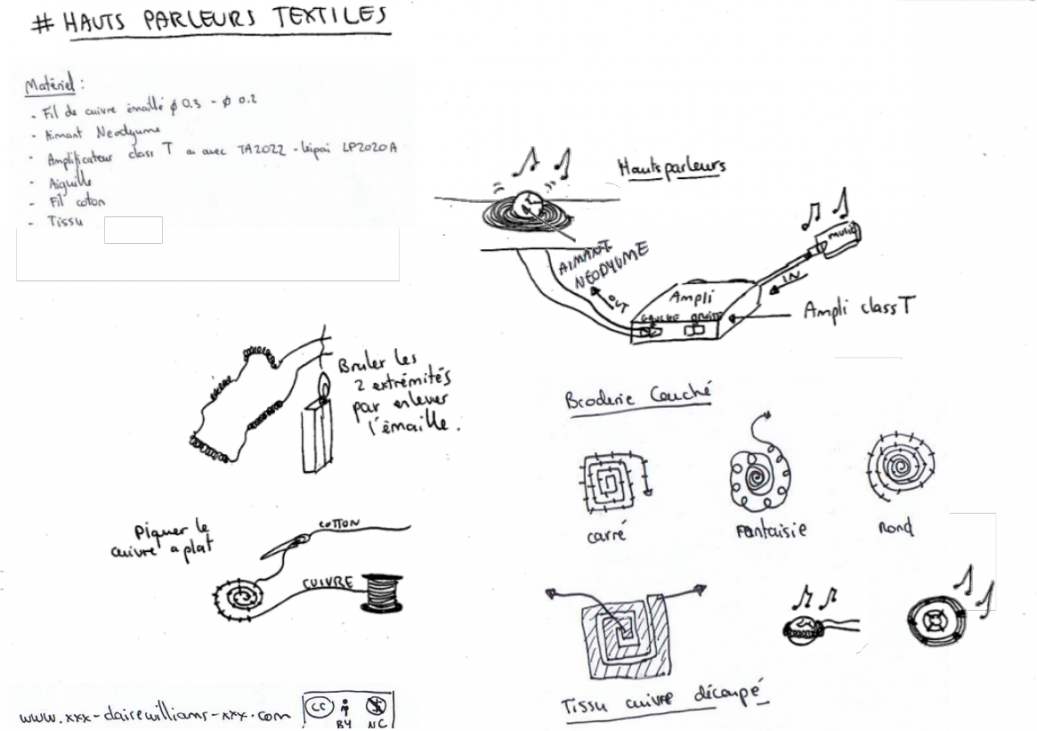
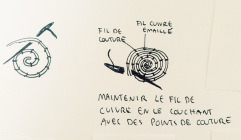
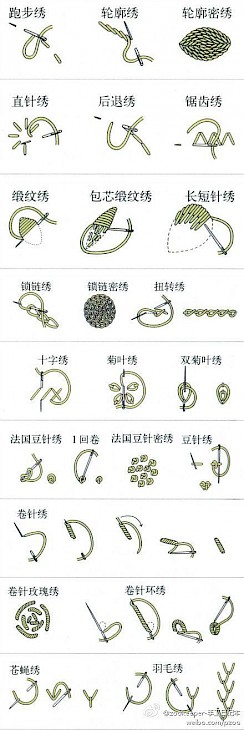
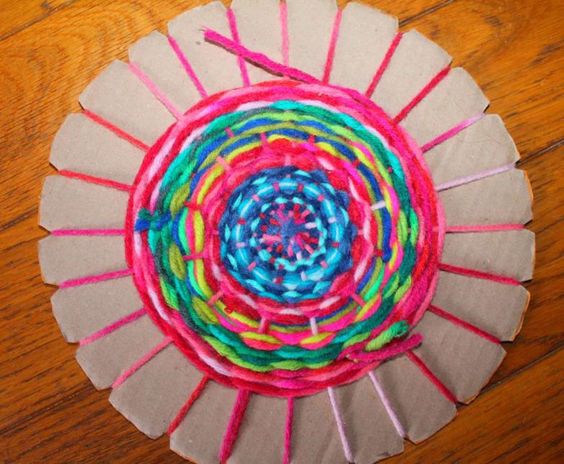
Amplification:
For the best results you need a class T amplifier & class D
Class D or Class T amplifier have overdrive protection.
Testé avec des amplificateurs class T & class D
Les amplis class D ou Class T on une protection de surcharge.
- Class D with a TA2022 amplifier
- Class T Lepai LP2020-A amplifier
Jesse Seay knitted speaker tutorial explained here: http://www.instructables.com/id/Hard-Drive-Magnet-Speakers/?ALLSTEPS#step4
-> Be careful that the copper doesn’t heat up too much!
For a more compact and wearable amplifier the LM386 op amp gave very good results using a gain of 200. Going for smallness sacrifices a louder sound and the quality get's a bit dirty …
Jesse Seay haut parleur tricoté tutoriel expliquée ici: http://www.instructables.com/id/Hard-Drive-Magnet-Speakers/?ALLSTEPS#step4
-> Attention que cela ne chauffe pas trop!
Pour un ampli plus compact et portable l'ampli LM386 op amp donne de bons résultats avec un gain de 200. On troque la miniaturisation pour un son certes moins fort et un peu plus crado...
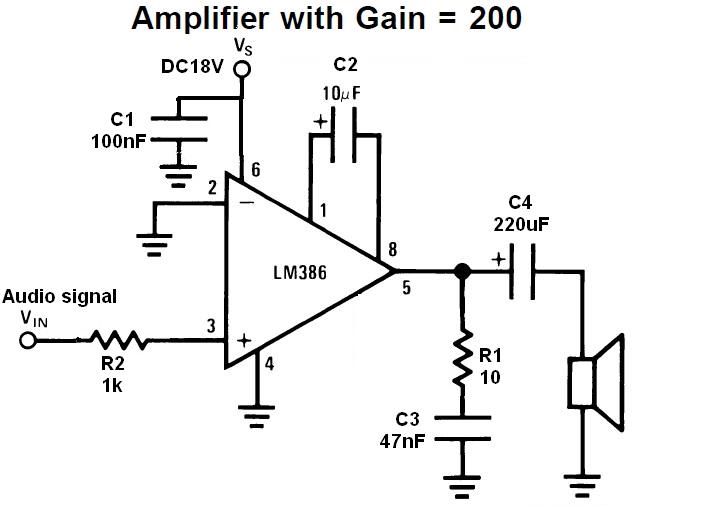
Gerber & Fritzing files here
Tips:
- The lighter your fabric is the louder your speaker will be.
- It’s best to test with a song which has strong bass
- The bigger your magnet is the louder the sound will be
Tips:
-
Plus le tissu est léger, plus le son sera fort grâce à la vibration du textile.
-
Tester avec un son qui a beaucoup de bass.
-
Plus l'aimant sera grand/fort plus le son sera fort.
<iframe width="560" height="315" src="https://www.youtube.com/embed/SofKnJ9XJuI" frameborder="0" allow="autoplay; encrypted-media" allowfullscreen></iframe>
<iframe width="560" height="315" src="https://www.youtube.com/embed/GjvtFsh_iMc" frameborder="0" allow="autoplay; encrypted-media" allowfullscreen></iframe>
How Sound Works:
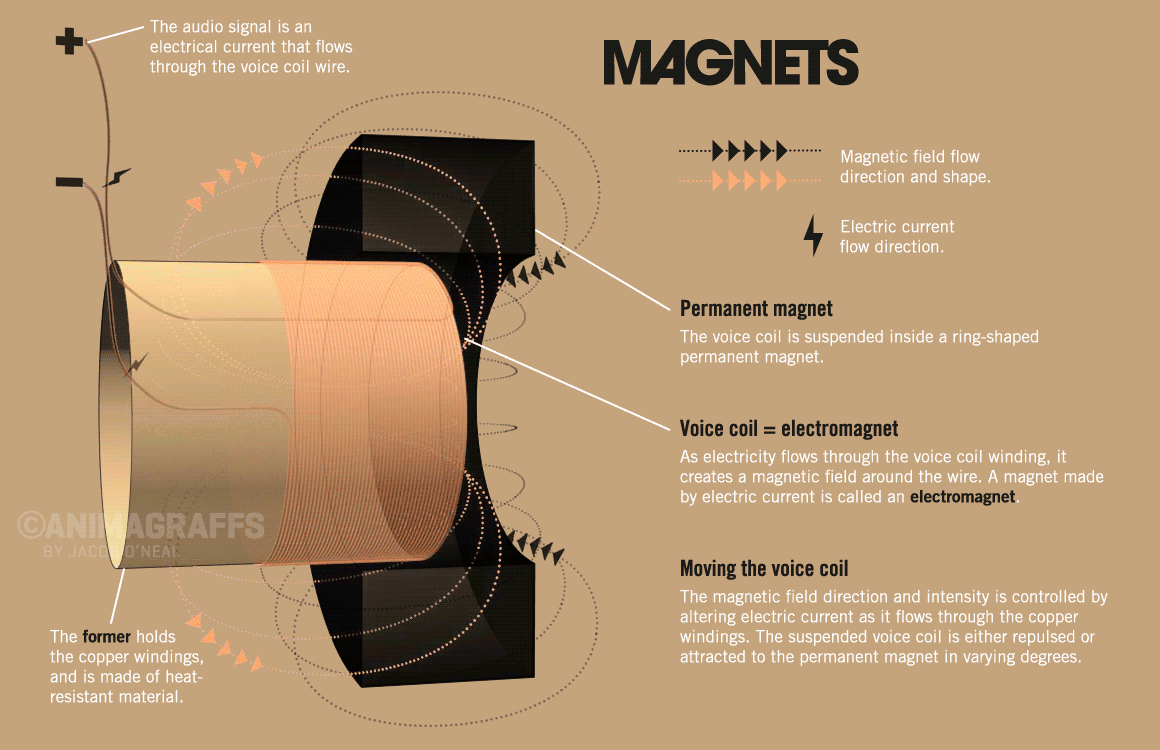
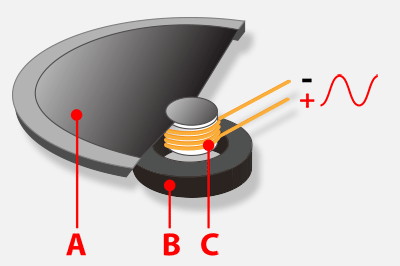
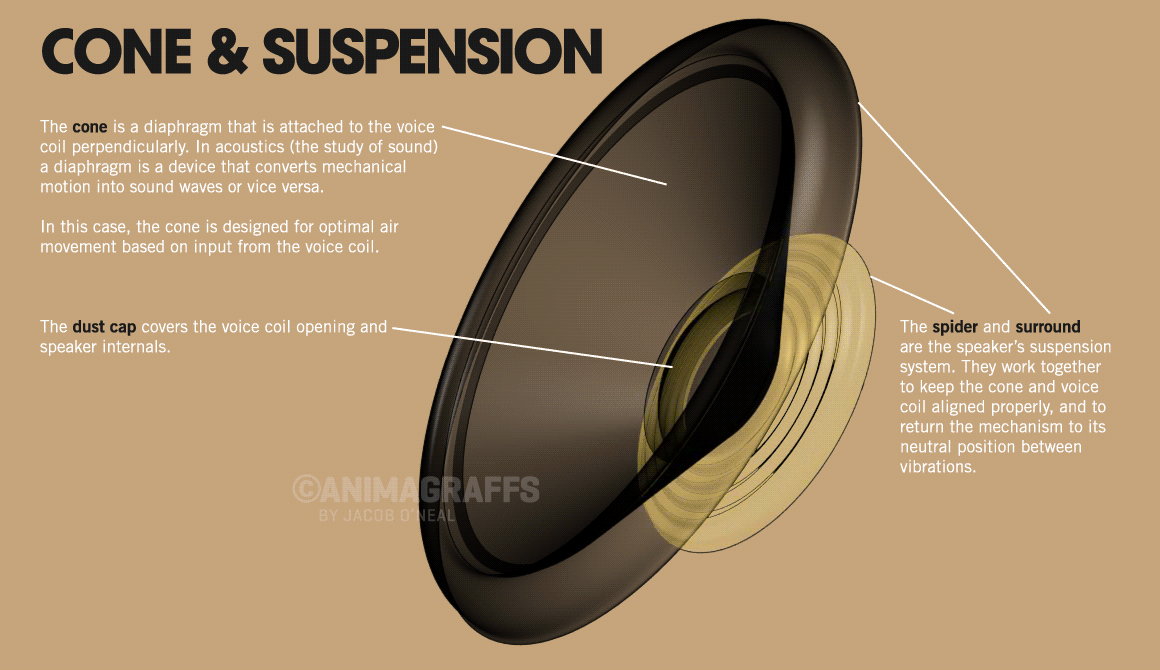

Audio explained: https://www.tweaking4all.com/generic/audio-basics-explained/
Sources:
http://www.kobakant.at/DIY/?p=2936
http://v2.nl/lab/projects/betaknit-research (knitted speakers)
http://www.instructables.com/id/Hard-Drive-Magnet-Speakers
http://www.instructables.com/id/Paper-Speakers-1/
Sound art
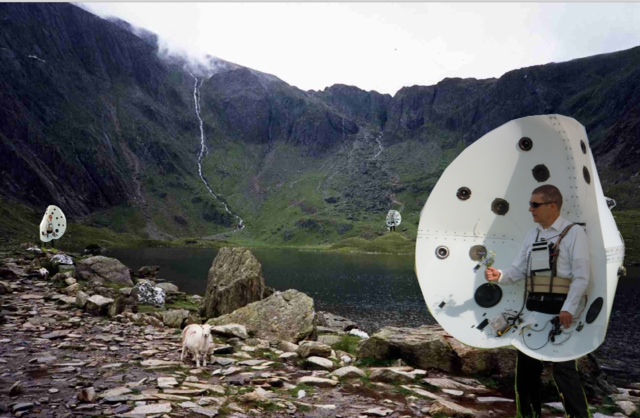
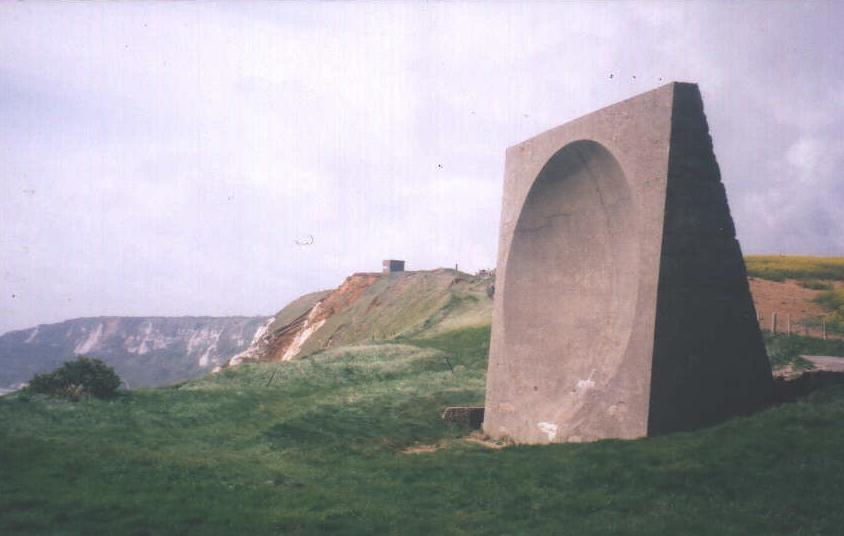
Sound Art projects: http://microphonesandloudspeakers.com/
Expérimentation en papier: https://cargocollective.com/coraliegourguechon/Undercurrent
Ejtech copper printed coil : https://vimeo.com/198286974 & https://vimeo.com/306788466





